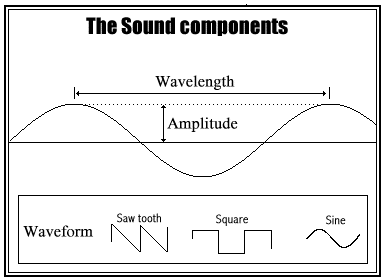
 













Acoustic terms

Study the basics
of acoustics...
Sound timbre
Overtones, Harmonics - Every sound consists, in fact, of a series
of harmonics sounded together. Two sounds of the same volume and pitch,
originating from different instruments, sound different since the relative
volumes of their overtones (harmonics higher than the basic frequency)
are different. If, in a particular sound the higher overtones are more
intense, for example, the sound will be sharp and even discordant. A sound
whose lower overtones are more intense, will be slightly muffled.
Resonance - Every body making a sound
has its own resonance frequency. This frequency is the regularity in which
an outside sound provokes a sonic reaction on its behalf. The phenomenon
of resonance is probably familiar to all of you: windows trembling as an
airplane makes a supersonic boom, glass that hum with a certain note of
the piano, etc. All of those bodies simply react to sounds in their own
resonance frequency.

Sound components
Frequency - The number of a body's vibration per time unit forms
frequency of the sound it makes. The higher the frequency is (that is,
the bigger number of vibrations), the higher the sound would be. The measurement
unit is Hertz (Hz). 1 Hz = one vibration per second.
Wavelength - The wavelength is the distance between too similar
points on the wave - this parameter is frequency's opposite, and in fact
its inversion. The higher the frequency - the shorter the wavelength.
Waveform - sets a sound's timbre. Since every natural sound consists
of several sound waves sounded together, they make a complex wave form.
If the wave form is cyclic, the sound has a definite pitch. An irregular
sound form is noise.
Amplitude - Amplitude sets a sound's volume. It is the maximal
distance from point of equilibrium in the regular motion on the generated
sound.

þListen to the 3 known
waveforms:
Sine
 
Saw
tooth
 
Square
 

The sound description
Except for the timbre of a musical sound, there is another component,
assisting its identification. And that is the graph of its changing along
the time axis: the envelope.
This sound's appearance (envelope) consists of four main phases:
1) Attack - sound volume leaps from zero to its maximum volume.
2) Decay - volume drop from peak.
3) Sustain - a certain time in which sound remains at a certain
volume, almost unchanged.
4) Release - sound drops to zero volume.




MusixCool© By Nadav
Dafni
|